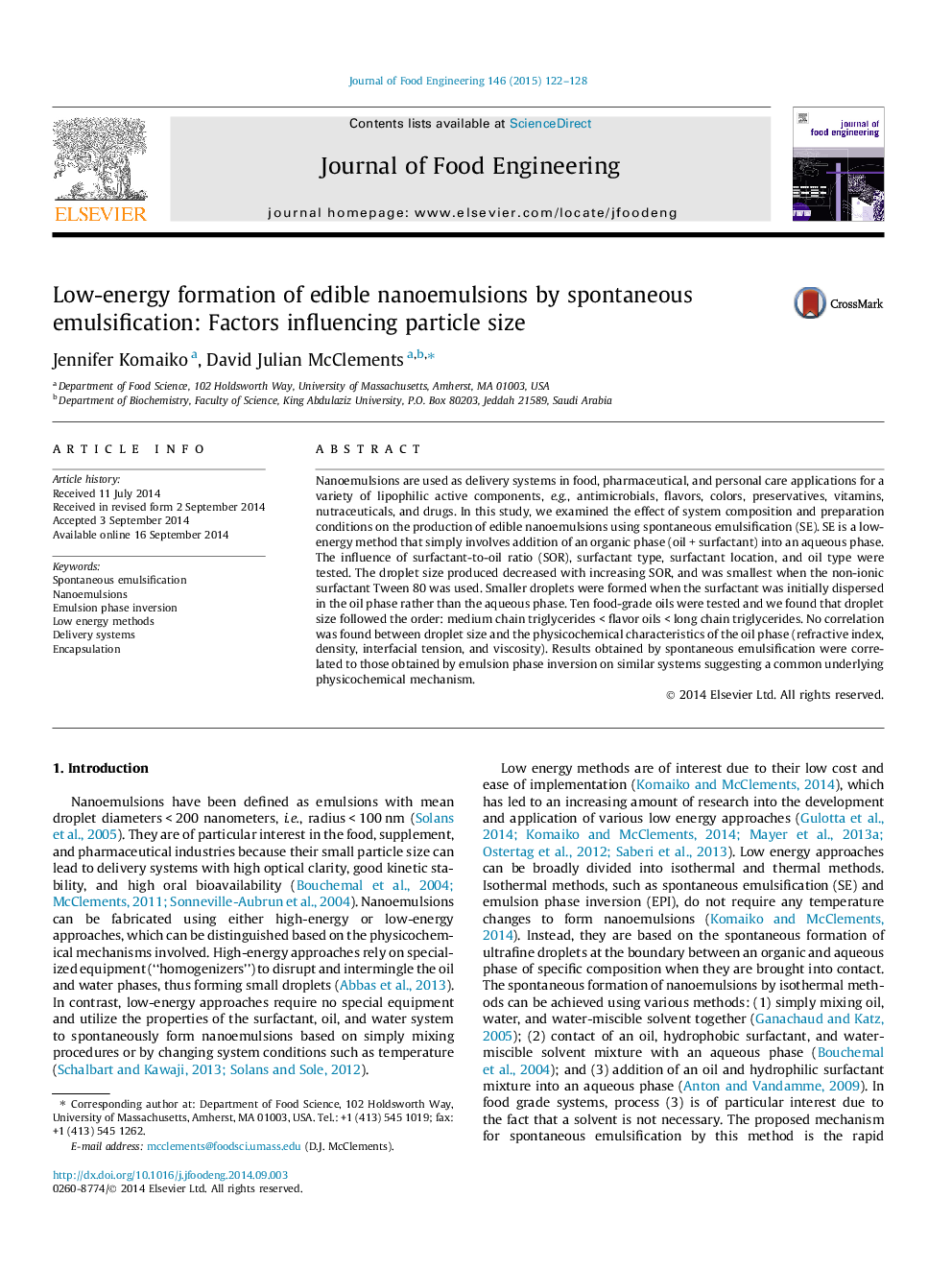| کد مقاله | کد نشریه | سال انتشار | مقاله انگلیسی | نسخه تمام متن |
|---|---|---|---|---|
| 222934 | 464317 | 2015 | 7 صفحه PDF | دانلود رایگان |
• The formation of nanoemulsions by spontaneous emulsification was studied.
• Droplet size depended on surfactant type, oil type, and surfactant location.
• Droplet size decreased with surfactant-to-oil ratio.
• Spontaneous emulsification and emulsion phase inversion methods were correlated.
Nanoemulsions are used as delivery systems in food, pharmaceutical, and personal care applications for a variety of lipophilic active components, e.g., antimicrobials, flavors, colors, preservatives, vitamins, nutraceuticals, and drugs. In this study, we examined the effect of system composition and preparation conditions on the production of edible nanoemulsions using spontaneous emulsification (SE). SE is a low-energy method that simply involves addition of an organic phase (oil + surfactant) into an aqueous phase. The influence of surfactant-to-oil ratio (SOR), surfactant type, surfactant location, and oil type were tested. The droplet size produced decreased with increasing SOR, and was smallest when the non-ionic surfactant Tween 80 was used. Smaller droplets were formed when the surfactant was initially dispersed in the oil phase rather than the aqueous phase. Ten food-grade oils were tested and we found that droplet size followed the order: medium chain triglycerides < flavor oils < long chain triglycerides. No correlation was found between droplet size and the physicochemical characteristics of the oil phase (refractive index, density, interfacial tension, and viscosity). Results obtained by spontaneous emulsification were correlated to those obtained by emulsion phase inversion on similar systems suggesting a common underlying physicochemical mechanism.
Journal: Journal of Food Engineering - Volume 146, February 2015, Pages 122–128
